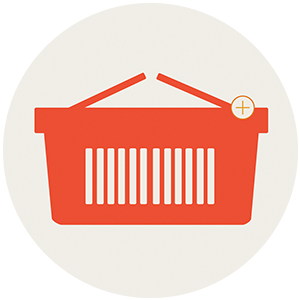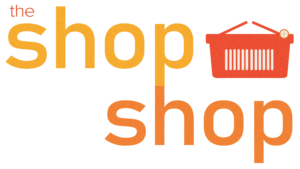As everyone in retail knows, it’s harder to find a first-time customer than get a repeat purchase. So, how did Birchbox approach this? Get their subscribers to pay for high-quality samples then, shop their site for the full-size items.
What is Birchbox?
One first of its kind, Birchbox is an online monthly subscription service for beauty in skincare. They send subscribers a box of up to five samples of makeup and other beauty-related products.
Birchbox doesn’t pay for the samples it includes. Instead, it works with several dozen brand partners, like bareMinerals, Stilla and Kiehls, to stock the boxes and provide links for customers to buy the products on the Birchbox site. Birchbox Aims to Simplify the Business of Beauty, New York Times
In 2010, Katia Beauchamp and Hayley Barna founded the company together with funding from investors. Katia saw a match made in heaven between subscription boxes and beauty or skincare samples. As young women were less interested in going to department stores in malls to try new products, samples languished behind counters. Also, makeup counters reported that gifted samples often went unused — so people didn’t even try the new products. So, Birchbox connected these groups by selling sample sizes of beauty products to customers in the form of a curated subscription box.
Yet in Birchbox’s initial years, it wasn’t such a straight shot to success. A number of companies (i.e. Ipsy, Glossybox) emerged, offering similar beauty boxes in the mail — all with a similar selection of samples from top brands.
Birchbox had a different business model to its competitors. Unlike other subscription companies with beauty boxes in the mail, which just gave customers a regular sampling of products, Birchbox also had an e-commerce store where you could buy the full-size versions.
Key To Success: Beauty Box Company Birchbox Says It’s Not Just About The Box, Forbes
The subscription starts with building a beauty profile to curate their experience.
Their subscriptions grew consistently for several years and they became a big name in the beauty world practically overnight.
In 2014, Birchbox opened its first brick-and-mortar store in New York. Not long after, they partnered with Soldsie to launch its first Instagram shop. The shop allows Instagram users interested in Birchbox products to purchase directly through Instagram by leaving a comment on a photo with the hashtag #birchboxcart.
In 2015, Barna stepped down from the co-CEO role at the company to pursue venture capital projects. Beauchamp continued the company expanding it into Walgreens in 2018.
They have about 300 thousand subscribers and 500 thousand active customers. About 5% of subscribers make full-size purchases of the products at a later date. Those purchases make up the majority of the company’s profits.
Most recently in 2023, it was acquired by Retention Brands.
Online Store Insights from Birchbox’s Founder Katia Beauchamp
In the Birchbox episode of How I Built This with Guy Raz, Beauchamp recalls several strategies for the online store connected with Birchbox.
1. Curate then personalize
Birchbox builds each monthly package around a theme. For April, it was Earth Day; the contents of the entire box were eco-friendly, down to the packaging, which was carbon-neutral and made from recycled materials. Birchbox also tailors its shipments to its customers, who can specify details like their age and hair type to receive products ideal for those demographics. – Birchbox Aims to Simplify the Business of Beauty, New York Times
From the outset, Birchbox decided that their taste would set the parameters for which brands and products they would make available in their subscriptions. Only after this, they would customize it to their subscribers’ tastes.
This ensured their boxes offered only the best samples, instead of what their potential suppliers wanted to push.
2. Assign Value
In the early days of Birchbox, the founders could have built the boxes as a way to simply get samples into the hands of consumers. However, they realized that by actually selling the boxes as a subscription — even at a smaller price point, they had more value. It made it more likely that the subscribers would actually use the product. And thus it was more valuable to them.
When talking to brands, most of them admitted that their store samples were often left unopened by customers. With Birchbox, people actually used them. And a solid percentage went on to buy the full size products.
3. Their Product Provided Content
Instead of wooing influencers to their brand, because that wasn’t a thing at the time, Birchbox was a product that attracted influencers as subscribers. Beauty vloggers subscribed to the service so that they would have new products to try and showcase in their content.
4. They thought online-first for the sales experience
Katia mentions that their Boy Brow product was one of their most popular products because it was made for online. Basically, it worked for everyone. When curating boxes, they looked for items that worked for a lot of people instead of ones that required a lot of testing, matching, and customizing.
Essentially, they picked the products that were the best in their category and used those to build the boxes. So, most of the time, they weren’t chasing micro-trends or trying to please customers with something that might not translate as well from an online sales experience. This created a different kind of value for the boxes. Their subscribers were more likely to enjoy and use whatever came in the package.
Overall, these insights made Birchbox’s subscription something that turned small purchases into larger ones. And that’s super valuable. Turning prospective customers into first time customers into repeat customers is hard to crack, especially in beauty where a lot of people are unwilling to try something new.
Those are the roots that made Birchbox grow into the brand they are today.
Listen to the Episode
Hear everything Katia has to say in the episode on Spotify. It’s a great listen with a lot of great tips for both online stores, subscription brands, and inbound marketers.
Further Reading
- Birchbox Aims to Simplify the Business of Beauty, New York Times
- Birchbox Launches Its New In-House Beauty Brand, Arrow, Beauty Packaging.com
- Birchbox Assets Purchased from FemTec Health by Retention Brands, PRNewswire
- Birchbox Raises $60 Million to Shake Up the Beauty Industry, Mashable
- Hayley Barna and Katia Beauchamp, Founders of Birchbox, Inc.
- (Founder Stories) Birchbox: On The Second Wave Of Ecommerce, TechCrunch
- Key To Success: Beauty Box Company Birchbox Says It’s Not Just About The Box, Forbes
- Walgreens takes a minority stake in Birchbox, which will now come to its stores, TechCrunch
- With a wired store, Birchbox rethinks brick-and-mortar retail, Fortune
Understand Shopping Trends
We’re dropping our next newsletter in July 2025. Sign up for exclusive freebies, giveaways, and industry insights.


